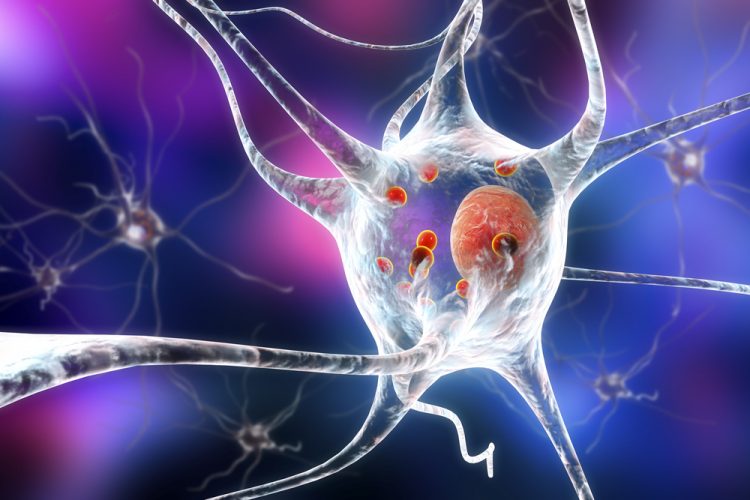Investigating antipsychotics in a Parkinson’s disease psychosis model
Posted: 4 April 2024 | Dr Nicholas Waters (IRLAB), Ellen Capon (Drug Target Review) | No comments yet
In this Q&A, Dr Nicholas Waters, Head of R&D at IRLAB, shares how three compounds, including IRLABs Mesdopetam and an experimental dopamine D3 receptor antagonist, could reverse features associated with the psychosis-like state of Parkinson’s disease.


What are the key findings of the preclinical study regarding the neurophysiological brain state in a Parkinson’s disease psychosis (PDP) model?
The animal model is based on creating a dopamine-deficient state, by a specific lesion of dopaminergic cells, and then exposing it to repeated substitution therapy with L-DOPA. This creates a condition which mimics the state in advanced PD in humans. On top of this, the NMDA antagonist MK-801, a pharmacological agent widely used to elicit psychosis like features, also in humans, is administered. Brain-wide electrophysiological recordings are undertaken, along with monitoring of overall motor behaviour.
The studies involve advanced data analysis, investigating patterns of electric activity in multiple brain regions. In the psychosis-like state induced, abnormal synchronisation between brain regions is observed. Furthermore, a specific, abnormal high-frequency oscillation (HFO) appears in several brain regions. Treatment with mesdopetam counteracted both these features of the psychosis model, ie, restored normal levels of synchronisation and reduced HFOs.
Importantly, the two clinically used antipsychotics shared these effects, which corroborates that this effect pattern in the PD-P model is associated with antipsychotic effects in patients with PD-P. Thus, by inference, Mesdopetam has a high likelihood of antipsychotic properties in people living with PD and psychotic episodes.
There were some regional differences in the exact regional effect patterns. A global comparison of the four test compounds showed that mesdopetam was more similar to the D3-antagonist tested, than to eg, clozapine. The exact implications of the differences remain to be determined, but it provides support that the D3 receptor is an important pharmacological target for mesdopetam.
What specific role does the dopamine D3 receptor play in PDP?
In rodents, non-human primates, as well as humans, long-term treatment with levodopa has been associated with an increase in dopamine D3 receptor expression. Further, there are studies showing increased incidence of visual hallucinations with a specific gene variant of D3. Visual hallucinations are common in PD.
Also, changes in dopamine D1-D3 cross-talk after long-term treatment with levodopa are hypothesised to contribute to the electrophysiological changes underlying PD-P. Thus, D3 receptors display an abnormal expression pattern and function in advanced PD, and this is hypothesised to contribute to PD-P.
In more general terms, PD-P has been described as a state of imbalance between serotonin and dopamine systems, possibly linked to specific alterations in cortical 5-HT2A-receptors, with downstream effects leading to excessive limbic dopamine signaling, which could be a substrate for antipsychotic effects of mesdopetam. Of note, D3 receptors are also implicated as a relevant target for antipsychotic treatment for schizophrenia, ie, they represent a general target for antipsychotic treatments.
In what ways does Mesdopetam show similarities to the experimental dopamine D3 receptor antagonist SB277011-A, as opposed to clozapine and pimavanserin, based on the overall comparison of their effects on reversing psychosis-like features?
For the evaluation of treatment effects on the reversal of psychosis-like features, Mesdopetam was compared head-to-head against the two existing antipsychotic compounds that are regarded as clinically useful treatment options in PD-P, ie, clozapine and pimavanserin. In spite of their different pharmacological profiles all three substances shared certain treatment effects (see point four below).
It is thought that Mesdopetam primarily acts via D3 receptors. We consequently hypothesised that in addition to the shared potentially therapeutic effects on HFOs, other parts of the frequency spectrum are altered differentially in different parts of the brain in a manner that reveals more about the specific properties of each compound. To test this hypothesis, we compared the full spectral content 1-300Hz, across six different brain regions recorded, in parallel. Because of the tentative D3 action, we also included another D3-acting compound (SB277011-A) as a reference. This comparison corroborated the hypothesis since the D3 reference compound and Mesdopteam showed greatest global similarity. Clozapine induced a significantly different brain state and pimavanserin, the only licensed compound for PD-P, turned out to be more similar to Mesdopetam on the global scale.
How do the observed reductions in aberrant high-frequency oscillations and abnormal synchronisation between brain regions contribute to understanding the underlying neurobiology of PDP and the potential efficacy of Mesdopetam and related compounds?
The hypothesis assumes that the abnormal HFOs and synchronisation represent key features linked to the emergence of PD-Psychosis, and hence, reversal of these phenomena is strongly suggestive of antipsychotic efficacy. Even though the three tested compounds had somewhat different effects in different parts of the brain it was evident that they shared a propensity to reduce abnormal HFOs in the prefrontal cortex towards normal activity patterns.
All three compounds also induced a global functional decoupling in the HFO frequency range, in effect reducing the abnormal synchronisation. These findings suggest that synchronised high frequency oscillations are contributing to cognitive disturbances in PD-P, and that a pharmacological suppression of these abnormal activity patterns is key to understand the potential antipsychotic properties of Mesdopetam as well as the therapeutic mechanisms of clozapine and pimavanserin.
What implications do these results have for the development of targeted therapeutic approaches for PDP?
The methods have translational validity and thus can support discovery and development of novel treatments in PD and were used in this specific study to further inform about the potential for mesdopetam as a treatment for PD-P, which is high according to the study.
This study was published in Neurotherapeutics.
About the author


Dr Nicholas Waters worked as a PhD student in Nobel Laureate Professor Arvid Carlsson’s research group at the Department of Pharmacology, Göteborg University (1987-1995). In 1996, Nicholas was awarded the Swedish Brain Foundation award. Between 1995 and 2000, he was managing research collaborations between the University and Pharma Industry partners.
In 1998, he co-founded Carlsson Research. In the years 1998-2002, he served as member of the board of directors at Carlsson Research. In 2002, he was appointed Chief Scientific Officer at Carlsson Research and in 2006 he was appointed CEO. In 2006, Carlsson Research was sold to NeuroSearch and changed name to NeuroSearch Sweden. In 2010 he was appointed Executive Vice President, Research at NeuroSearch.
Nicholas continued to serve as CEO of NeuroSearch Sweden through 2012. In 2013, Nicholas co-founded IRLAB Sweden. Nicholas served as the CEO of IRLAB Sweden between 2012 and 2022 and for IRLAB therapeutics 2016-2022. During the years 2007-2010 he served as board member of SwedenBIO, the Swedish Biotech industry association. Nicholas holds a PhD in Pharmacology.
Related topics
Animal Models, Drug Targets, Neurosciences, Therapeutics
Related conditions
Parkinson's disease (PD)
Related organisations
IRLAB
Related people
Dr Nicholas Waters (IRLAB)








